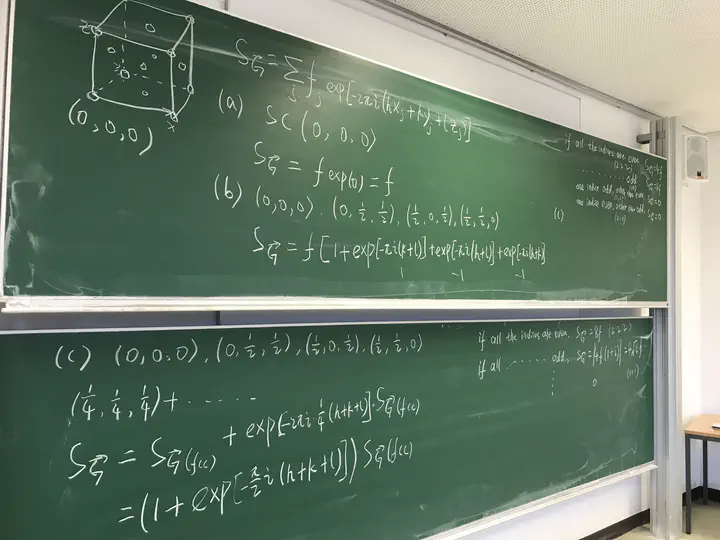
I am responsible for teaching the solid state physics exercise class in this semester (Winter Semester 2023/2024). Crystal structure is a crucial aspect of the lecture.
As we know, there are a total of 7 crystal systems, 14 Bravais lattices, 32 point groups, and 230 space groups in three dimensions. The Hermann-Mauguin notation for space groups can be a little challenging.
In Hermann-Mauguin notation, the first letter is capitalized and explains what kind of centering is present in the Bravais lattice. ‘P’ stands for primitive, ‘F’ stands for face-centered, ‘I’ stands for body-centered, ‘A’, ‘B’, ‘C’ stand for base-centered.
After the centering letter, there are symmetry operations that operate on three different axes. Positive numbers ‘n’ mean that there is an ‘n’-fold rotation, while negative numbers ‘n’ mean there is an ‘n’-fold rotoinversion. Numbers with a subscript ‘XY’ indicate screw axes. The letter ’m' stands for mirror planes. Any other lowercase letters refer to glide planes, such as ‘a’, ‘b’, ‘c’, ‘e’ (glide along one face), ‘n’ (glide along half diagonal of a face), and ’d' (glide along ¼ diagonal of a face).
For example, in the notation ‘Xefg’, where ‘X’ represents the Bravais lattice (P, F, I, or A, B, C), and ‘efg’ is the characteristic symbol for the crystallographic point group. Symbols of symmetry operations combined with translation, such as screw axes or glide planes, can be given instead of normal symbols of rotation axes and mirror planes.
Turning to my research area, understanding the symmetry of the crystal allows us to simulate the X-ray/electron diffraction patterns and azimuthal-dependent sum-frequency generation (SFG) patterns before conducting the experiments. In the case of any ultrafast structural changes (space group changes) due to femtosecond optical pulse excitation, we can directly estimate the differences in diffraction patterns or azimuthal-dependent nonlinear spectroscopy patterns.